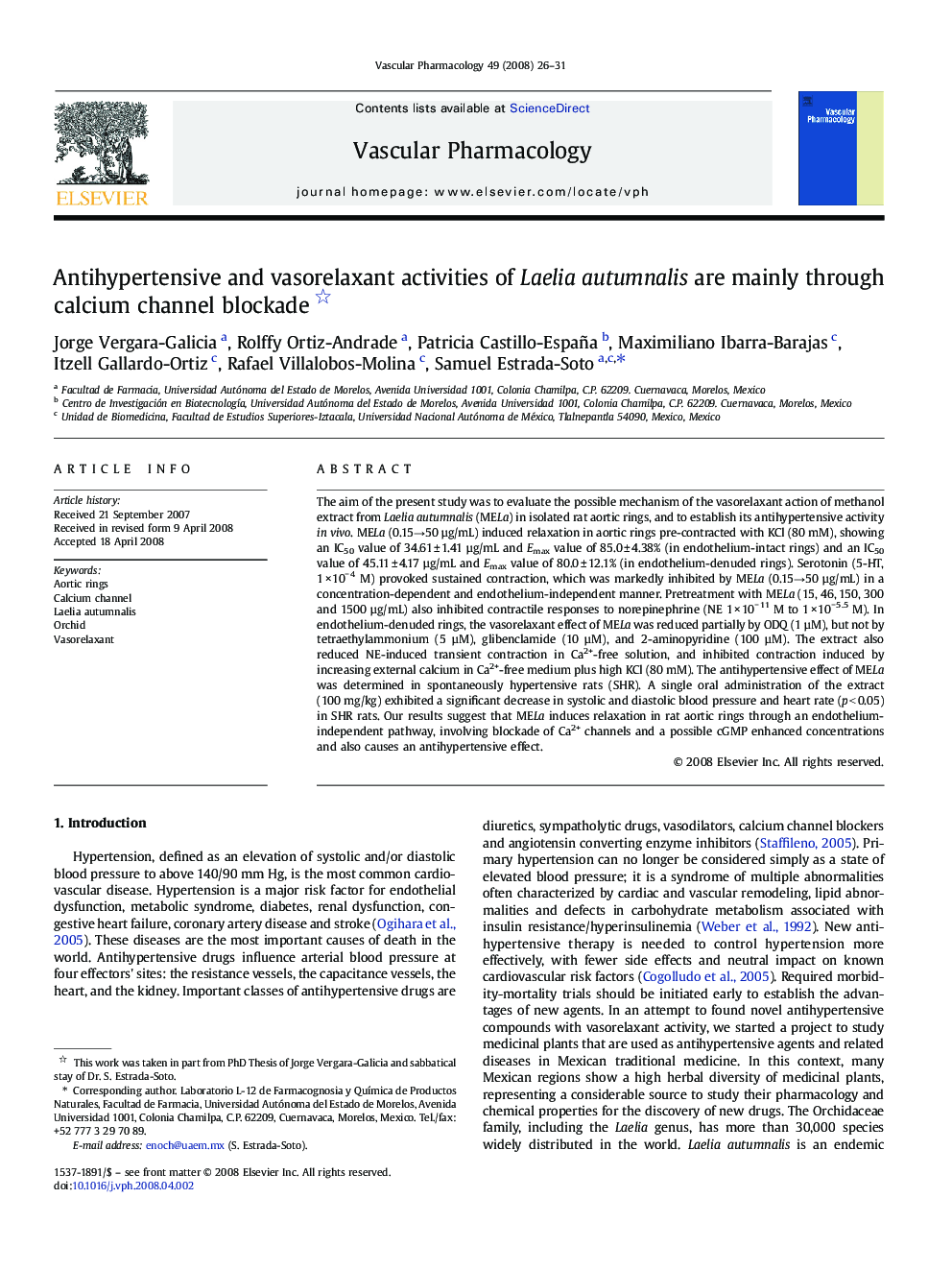| Article ID | Journal | Published Year | Pages | File Type |
|---|---|---|---|---|
| 2574657 | Vascular Pharmacology | 2008 | 6 Pages |
The aim of the present study was to evaluate the possible mechanism of the vasorelaxant action of methanol extract from Laelia autumnalis (MELa) in isolated rat aortic rings, and to establish its antihypertensive activity in vivo. MELa (0.15→50 µg/mL) induced relaxation in aortic rings pre-contracted with KCl (80 mM), showing an IC50 value of 34.61 ± 1.41 µg/mL and Emax value of 85.0 ± 4.38% (in endothelium-intact rings) and an IC50 value of 45.11 ± 4.17 µg/mL and Emax value of 80.0 ± 12.1% (in endothelium-denuded rings). Serotonin (5-HT, 1 × 10− 4 M) provoked sustained contraction, which was markedly inhibited by MELa (0.15→50 µg/mL) in a concentration-dependent and endothelium-independent manner. Pretreatment with MELa (15, 46, 150, 300 and 1500 µg/mL) also inhibited contractile responses to norepinephrine (NE 1 × 10− 11 M to 1 × 10− 5.5 M). In endothelium-denuded rings, the vasorelaxant effect of MELa was reduced partially by ODQ (1 µM), but not by tetraethylammonium (5 µM), glibenclamide (10 µM), and 2-aminopyridine (100 µM). The extract also reduced NE-induced transient contraction in Ca2+-free solution, and inhibited contraction induced by increasing external calcium in Ca2+-free medium plus high KCl (80 mM). The antihypertensive effect of MELa was determined in spontaneously hypertensive rats (SHR). A single oral administration of the extract (100 mg/kg) exhibited a significant decrease in systolic and diastolic blood pressure and heart rate (p < 0.05) in SHR rats. Our results suggest that MELa induces relaxation in rat aortic rings through an endothelium-independent pathway, involving blockade of Ca2+ channels and a possible cGMP enhanced concentrations and also causes an antihypertensive effect.
